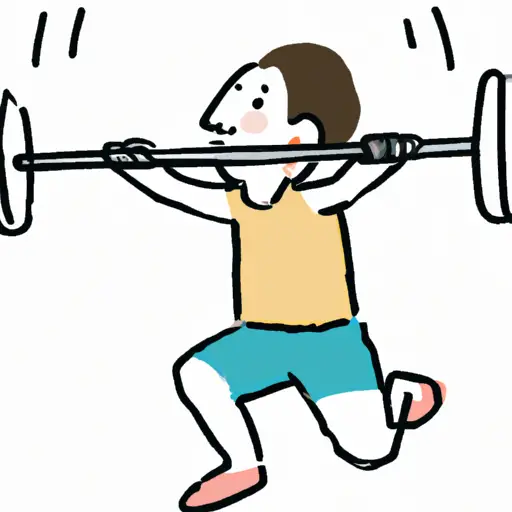What is Strength Training?
Strength training can mean a lot of things, but it generally refers to any type of exercise that requires you to use your body’s own strength or resistance to build muscle. This could be anything from lifting weights to doing push-ups or even using an exercise ball. For the purposes of this blog, we’ll focus on exercises that specifically target the muscles in your body.
When it comes to strength training, there are plenty of different types of exercises you can do. Some of the most popular include weightlifting, squats, deadlifts, lunge jumps, pull-ups and bench presses. While some of these exercises may seem intimidating at first, don’t be put off – with the right technique and form, they’re really quite easy to learn!
The beauty of strength training is that it doesn’t take too long to see results. Even just fifteen minutes of strength training three times per week can make a huge difference in your health and fitness goals. Plus, strength training helps improve your balance, coordination, and cardiovascular fitness.
What is Strength Training?
Strength training is a form of exercise that builds muscle and increases strength. It usually involves using some type of resistance or weight, such as a barbell or dumbbell, to push and pull against. Different types of exercises are used to target different muscle groups and vary in difficulty and intensity depending on the individual’s needs and goals.
There are many different types of strength training exercises, from bodyweight exercises like push-ups and squats to Olympic weightlifting moves like snatches and cleans. Each exercise should be properly executed with correct technique to ensure safety and effectiveness.

For example, when doing a barbell squat, you should stand with feet slightly wider than hip-width apart, keeping your chest up and weight on your heels while lowering into a full squat position. On the way up, push through your heels and squeeze the glutes at the top. When doing a deadlift, use a hip hinge motion, pushing your butt back and gripping the bar firmly while maintaining a neutral spine.
Other examples of strength training exercises include bench presses, overhead presses, pull-ups, bent-over rows, landmines, and kettlebell swings. Each of these exercises targets different muscle groups and have variations based on the individual’s fitness level.
Incorporating Strength Training Into Your Workout
Not sure how to get the gains you desire? No problem! Incorporating strength training into your workouts can be easy, with just a few tips. Here’s how:
Finding time for strength training can be tricky. You may have to adjust your schedule or set aside specific days of the week for it. But it pays off big time in the end. It’s important to stick to an allotted amount of time so that you don’t overtax yourself and become discouraged.
Once you make some room in your day-to-day routine, start crafting a routine that works best for you. Pick exercises that focus on certain areas of your body and switch them up every now and then to keep it fresh. Also, make sure your rest days are intentional–not simply because you’re too tired from working out the day before. That way, your body has time to recover and go back stronger than ever.
When you’re deciding intensity levels for each exercise, find a balance between pushing yourself and being mindful. Don’t be too hard on yourself if you aren’t lifting as much weight as someone else. Remember, everyone has their own fitness goals and journeys. As long as you’re doing the best you can, even small enhancements count.
Other Tips for Incorporating Strength Training
If you’re serious about getting results when it comes to strength training, it helps to know a few tricks of the trade. Here’s some advice that’ll help you get the most out of your sessions:
Start slow – Rome wasn’t built in a day, and building strength isn’t either. There’s no need to jump right into heavy lifting; start with lighter weights and work your way up as you build strength. This’ll help you avoid injury and keep you motivated to reach your goals.
Listen to your body – This one is key. Don’t push yourself too hard, or you could end up overtraining. Listen to your body to determine how much you can handle, and take breaks when needed. The goal is to challenge yourself, but there has to be a balance.
Rest and Recovery – Don’t forget about the importance of rest and recovery. It’s normal to feel sore after strength training, but if you’re constantly feeling beat-up, you should back off for a bit. Give your body time to rest and let your muscles heal up so you can hit it even harder next time.
ConclusionStrength training is an essential part of any workout. It can help you build strength, improve balance and stability, increase energy, and reduce injury risk. It can also help you become more fit and active overall. While strength training may seem intimidating at first, it doesn’t have to be. With the right plan and some commitment, you can easily incorporate it into your existing routine. Start by finding a few exercises that work for you. Make sure to pay attention to form and technique – improper form can lead to injuries. Start slowly and gradually increase the intensity over time so that you don’t overwhelm yourself. Listen to your body and adjust your routine accordingly. And of course, make sure to take rests and give yourself time to recover between workouts.It can take a bit of trial and error to get the hang of strength training, but with some dedication and effort, it can become a regular part of your weekly routine. So what are you waiting for? Get out there and get started!
Strength Training FAQs
How do you combine HIIT and strength training?
I’d say the best way to combine HIIT (High-Intensity Interval Training) and strength training is to alternate days. Start with a strength-training day, followed by a HIIT day, and then back to strength-training. That way, you can get the most out of both types of workouts. On your strength-training days, focus on compound moves that challenge your whole body. Think squats, rows, push-ups, and presses. On HIIT days, you’ll want to go all-out with short bursts of intense cardio. These should be around 30 seconds with a rest period in between. This should be challenging, so don’t be afraid to push yourself. With this combination, you’ve got the best of both worlds – you’ll get the muscle-building benefits from strength training and the cardiovascular gains from HIIT.
Can you get fit with just strength training?
Sure, you can get fit with just strength training. It can get you in shape if you’re willing to put in the effort. To really maximize your gains, though, I’d recommend combining strength training with other forms of exercise, such as running or swimming, to create an overall fitness program. That way you’ll get the best results and keep that fitness level for the long haul.
Don’t forget to mix up your routine too. Variety is the spice of life, so don’t get stuck in a rut, doing the same exercises all the time. Instead, try incorporating new exercises and varied reps and sets so your body doesn’t plateau, and you get maximum benefits from your program.
Also, be sure to find an exercise program that fits your lifestyle; if you don’t enjoy it, you won’t stick with it. And remember to watch your diet – the only way to get the body you want is to eat right and fuel your body with the right nutrients.
So, yes, you *can* get fit with just strength training – but for the best results, don’t just focus on that one area. Add in other exercises, mix up your routine, and don’t forget about nutrition. Then you’ll be well on your way to a fitter, healthier you!
how to incorporate strength training into your workouts
I’m Bob Woodward and I’m here to show you how to incorporate strength training into your workouts. First off, let’s get one thing straight: strength training is essential for any fitness program. It builds muscle, boosts metabolism, and helps to maintain a healthy body weight. A well-rounded program should include a variety of exercises, from weight-bearing exercises to bodyweight exercises, that focus on all major muscle groups.
The best way to start incorporating strength training into your workout is to start with basic exercises and work your way up. Start with compound lifts, like squats and deadlifts, to target multiple muscles at once. As your strength increases, you can move on to more advanced exercises that target smaller muscle groups. You can also vary your rep ranges and try different types of equipment, like dumbbells, kettlebells, and resistance bands.
Another important factor when it comes to strength training is to ensure you get enough rest between your workouts. You want to avoid overtraining, which can lead to fatigue and injury. Get enough rest between workouts and make sure to give your muscles time to recover. Be sure to include proper nutrition and hydration in your routine as well.
Finally, remember to have fun when strength training! Do the exercises you enjoy and don’t be afraid to switch it up if your routine becomes stale. Keeping things fresh is the best way to stay motivated and keep progressing. With a little bit of effort and consistency, strength training can be a great addition to your fitness program.






